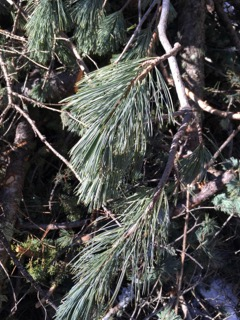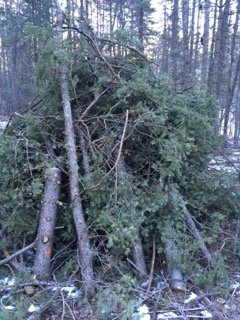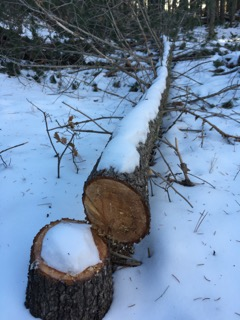Letter to James Melonas, SFNF Supervisor regarding SW white pine etc.



December 21, 2018
Mr. James Melonas, Supervisor
USDA Forest Service
Santa Fe National Forest
11 Forest Lane
Santa Fe, New Mexico 87508
re: Southwestern white pine and slash piles in the Hyde Park project
Dear James:
There are two issues of pressing concern in the on-going Hyde Park project that require your attention.
First, thousands of Southwestern white pine (SWWP) have been cut on the adjacent hillside of Black Canyon (see attached photos). In 2009 the Santa Fe Municipal Watershed 20 Year Protection Plan recommended that this selfsustaining SWWP population be protected during on-going maintenance activities. To quote from the Protection Plan p. 20:
Continue to protect Southwestern white pine. During planning of restoration treatments a concern was expressed for the fate of Southwestern white pines in the watershed, because populations have suffered in the West in recent years due to the exotic white pine blister rust. White pines in the watershed have been reproducing successfully in spite of the threat of blister rust and thus the Santa Fe Watershed has been identified as a possible sub-regional refugia for this tree species. The protection of southwestern white pines should continue to be an objective throughout long-term prescribed burning maintenance.
The SWWP refugia extends to the Hyde Park project. At the northern limits of its distribution, this SWWP population may be exhibiting unique resistance to white pine blister rust. Removing individuals that are genetically resistant before it can be determined their value in countering the disease would be a significant loss to regional biodiversity. It's also unlikely that the standards of the SFNF plan are being met. The plan clearly states (p. 70) that a minimum of 120 SWWP remain per acre following clearing and burning.
Unfortunately, the Forest Service has a long history of ignoring evolutionary processes such as natural selection. In its formative years the agency encouraged land owners along the eastern seaboard to cut down all American chestnuts before they were killed by an exotic blight. As a result genetically resistant trees that may have allowed the species to survive and adapt were lost.1 A more recent example is salvage logging of beetle killed white bark pine in the northern Rockies. In this case, resistance and adaption is threatened by both clearing dead and surviving Pinus albicaulis and large-scale replanting of non-resistant trees. (2)
Second, there are hundreds of large closely spaced slash piles on the steep hillsides above Black Canyon. These piles are built for maximum ventilation; when burned the organic matter in the soil beneath will be lost along with the microbial community. The Record of Decision for the Santa Fe Municipal Watershed Project requires that slash piles generally be no more than eight feet in diameter and six feet high to address this concern. The Hyde Park slash piles are far larger (see attached photo). There is no justification in the project record for abandoning standard size limitations designed to maintain soil productivity.
(3) In closing we want to commend you and your staff for preserving the old growth aspen in Black Canyon. As you know nearly 70 species of breeding birds have been documented here in recent years indicating the importance of this habitat. Please let us know if you have questions and thank you for your prompt attention.
Respectfully,
/Sam Hitt/
Sam Hitt, President
Santa Fe Forest Coalition
P.O. Box 1943,
Santa Fe, NM 87504
sam@wildwatershed.org
cc:
Mr. Sanford Hurlocker, District Ranger
Congressman Ben Ray Lujan
Senator Martin Heinrich
Senator Tom Udall
1. See Kelly, A.R. Chestnut surviving blight. Science 40 (1924): 292-93
2. See Six, D., C. Vergobbi and M. Cutter. 2018. Are survivors different? Genetic-based selection of trees by mountain pine beetle during climate change-driven outbreaks in a high-elevation pine forest. Frontiers in Plant Science
3. The Hyde Park project calls for keeping slash piles away from intermittent and perennial streams and Mexican spotted owl PACs but fails to discuss or evaluate size limitations found in the more detailed Santa Fe watershed EIS.
See the pdf version of the letter.
